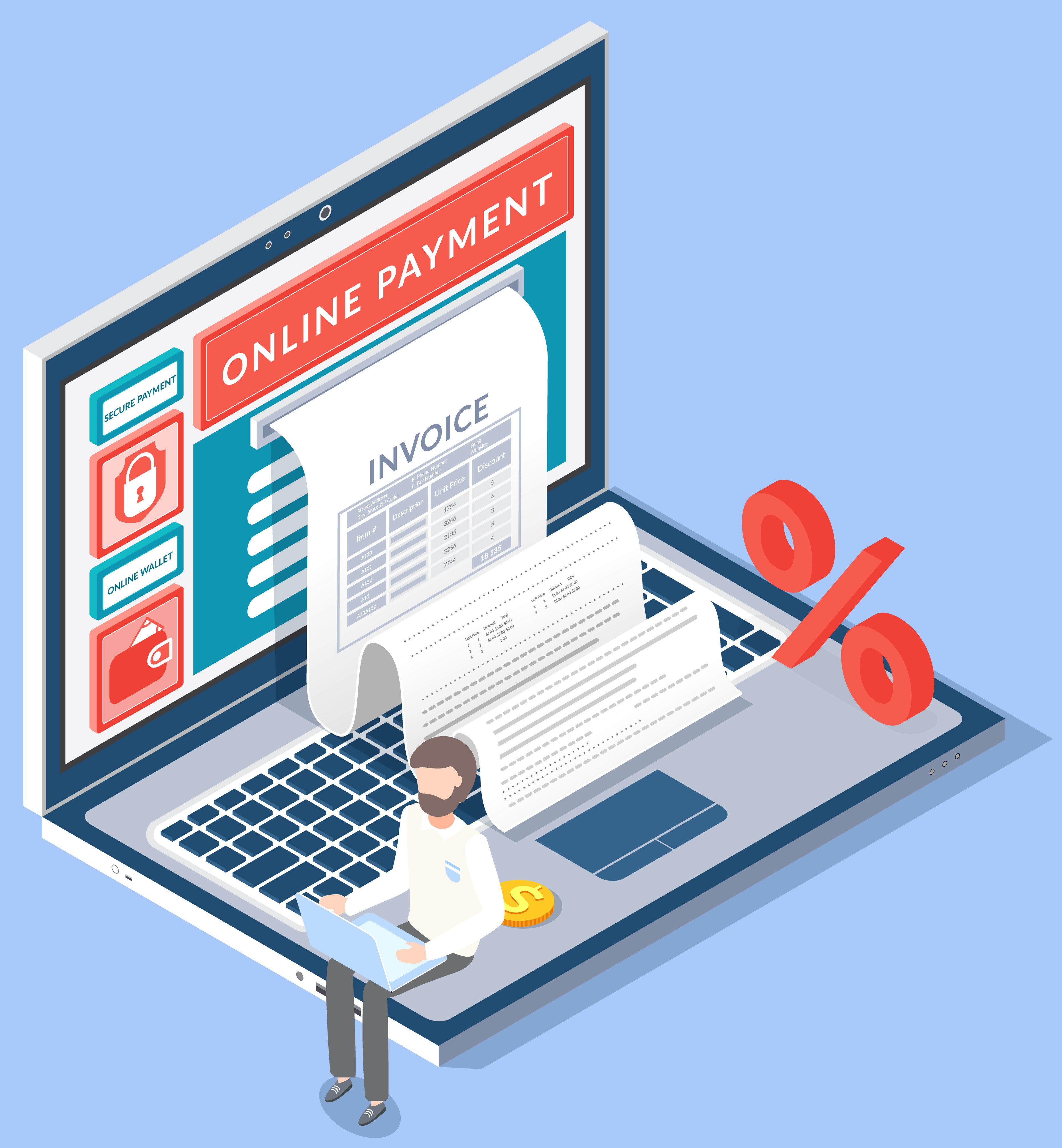Online payments are here to stay
Online payment systems used to be seen as "the way of the future," especially for small businesses. The challenges of setting up a website, ensuring a secure payment portal, and getting payments into operational bank accounts were once too daunting to consider.
Now, any business that doesn’t accept online payments is likely to raise an eyebrow with its customers. As online payments have become the norm, businesses that don’t offer this convenience may appear outdated or behind the curve. The landscape has evolved, and the range of options for accepting payments online has expanded significantly, providing businesses with more flexibility than ever before.
Let’s take a closer look at the features, options, and costs associated with different payment software, and explore which system might be the best fit for your business. From integrated payment gateways to subscription-based models, there are various solutions to consider based on your business size, industry, and customer needs. Additionally, it’s important to factor in the security of these platforms to protect sensitive data and ensure compliance with industry standards, making sure your business not only accepts payments efficiently but also safeguards its reputation and customer trust.
Why go virtual with payment processing?
We’ve come a long way from the first time a business offered to accept payment via PayPal! There are so many benefits for switching your payment options to something involving accounting software or cloud accounting. Whether you’re a startup or a multisite operation, everything involved with accounting is a crucial part of your success.
Some of the biggest advantages include getting paid faster, saving time, improved communications with your customers, keeping organized, managing cash flow, API solutions, and handling taxes, discounts, and payment plans. Having an online payment system is usually only one part of what any option offers to businesses. When it’s added to streamlining your accounting and accounts receivables and reducing payment headaches, there’s a lot to love.
One of the biggest deterrents in the past has been the cost of a payment system. But—as with many things involving digitization—the cost is actually less than keeping with manual systems. The savings come from reduced labor, the speed that invoices are received and paid, reduced paperwork, and fewer errors.
Late payments are always a problem for businesses, but this is compounded when there are errors in invoices (or errors made when making manual payments). Using an online invoicing system reduces errors both in creating and sending invoices and in paying them. And, when there is a mistake on an invoice, it’s much easier to correct it and reissue it when the system is digital/online.
If your business operates on any sort of subscription service or has contracts with customers with recurring invoices, automation using an online system is a huge advantage and will create savings both for you and for your customers who can ‘set it and forget it’ with automatic payments.
What are the most common payment software options?
There are a lot of features you can find in different payment software and cloud accounting companies. Some are better for B2Cs, and others work best for B2Bs. Here are some of the main features of different options:
Braintree Payment Solution Braintree’s most prominent feature is its ability to accept payments from a variety of providers including Apple Pay, Venmo, Google Pay, MasterPass, and Visa Checkout. They also allow businesses to accept payments in multiple currencies so it’s good if you have international customers.
FreshBooks – Good to consider if you already use FreshBooks for your accounting system. The payment gateway allows companies to accept online, in-person, and even phone payments. Offers access to recurring payments and automations. Credit card and Apply Pay transactions charge fees of 2.9% plus $0.30 each, ACH payments cost 1.0%.
PayPal – Although this was one of the original online payment platforms (and is still popular with freelancers), its fees make it prohibitive if you need to do large volumes of transactions. For micro merchants or those with low volumes who don’t want a subscription service, PayPal is a good invoicing solution, but note that their rates are a bit confusing. One advantage is that PayPal is well known and generally well trusted as a payment processor.
QuickBooks Payments – Good for those already using QuickBooks. (Note: There are other programs that offer integrations with QuickBooks, so you do have options.) Some nice features include adding a ‘Pay Now’ button to invoices and getting real-time notifications when a customer opens or pays an invoice. Pricing varies for different payment methods, and you can also choose a pay-as-you-go plan or a monthly plan with lower transaction fees.
Resolve – This is a platform that offers a unique payment feature: a branded platform so customers only see your business when they make payments. Also provides net terms and complete credit management services, plus advance payments in one business day on invoices of approved customers.
Stripe Payments – Stripe works well for online businesses and SaaS companies. It also integrates with accounting platforms like Sage (although the fees need to be considered if most of your payments will be coming from the platform). Commonly used for online businesses and those that accept recurring payments.
Square – Good for eCommerce companies, offers invoicing and payment processing. Also offers card readers for accepting in-person payments. You can send invoices using Square Invoices and send payment reminders automatically. Square Installments allow for accepting payment plans. Biggest customer complaints are high transaction fees (2.9% of the invoices plus $0.30 each) and not having access to invoice templates.
Invoice payments: The basics
It used to be the case that after a business issued an invoice, it could be paid in three ways: by cash in person, with a check (either mailed or brought in person), or with a bank transfer or money order. Every one of those methods required handling and processing from both the business making the payment and the business receiving the payment.
While there were certainly some accounting wizards that managed to handle all this with an impressive level of efficiency, the increased handling left a lot of room for mistakes. It also still took time for payments to get from the office to the bank account.
Now, invoice payments are a whole new game. Let’s start with issuing invoice payments online. You can enter all the information about a customer including address, contact information, and tax status. (For businesses with customers across state lines, the chance to automatically include the correct tax rates is one of the big time savers of online payments.)
Having an invoicing system that has your company’s logo, colors, and branding creates a more professional impression with your customers. And, with many reminders for filling in each field of an invoice (especially ones you can automate), it’s far more likely that all the information your customers need will always be right at hand. Once an invoice has been sent, most platforms allow you to watch its progress. You can see when it’s been viewed and can send a follow-up with a few clicks.
When your customer opens the invoice, they’ll have an option to click to make a payment right from the invoice. This is one of the ways that the ease of online systems increases on-time payments. Most online payment options will accept ACH payments (direct withdrawals using a customer’s online banking access or debit card), credit card payments, and wire payments. But always be sure you’re aware of which transaction costs you’ll be expected to cover in accepting these payment methods—wire transfers are almost always the most expensive, and can take days to complete.
The final step in the process is when the invoice is marked as paid. Both you and your customer now have access to this information. Any questions can be resolved with a quick check, and the system is ready for the next invoice.
How do I choose which online invoice payment software to use?
With such a large range of possibilities, it can be hard to decide which invoicing software or platform is right for your business. If you do already have an accounting program in place, you can start by narrowing down the options to the ones that are set up for easy integrations with your accounting software. One of the best things about payment software is making your accounting processes easier, so not having to change your accounting—and definitely not needing two separate programs running—is a good thing.
Another thing to consider is how the features of a payment system work for your industry and for the way you do business.
For example, Resolve is ideal for companies that frequently offer net terms to their customers. If you have to manage net terms of 30, 60, or 90 days, you already know the challenges involved in determining credit limits and terms and tracking payments.
Resolve is a complete B2B credit management and net terms solutions. So, in addition to offering user-friendly online payment options, they also advise on credit terms using discreet credit checks, so you don’t need to guess what to offer each customer. Resolve also offers payment of up to 90% of each invoice within one day for approved customers.
Ease of use is another valuable feature in the payment software you select. The best way to check into this is to read online customer reviews for the options you’re considering. If customers have had a hard time onboarding their team with the program, or they haven’t been able to access customer service when they need help, these are big red flags. On the other hand, any reviews that rave about how easy the program is are worth noting. Saving money through online payment systems should also mean not having to pay extra labor for your team to figure out what to do.
If you have a sales team that travels, accessibility to the platform while remote may also be important. With this feature, they should be able to easily see what a customer owes, and what types of credit can be extended. Many businesses report that being able to quickly confirm with a customer the amount of credit they have access to increases sales amounts and increases the rate that sales teams close contracts.
The power of invoicing software for small businesses
Small business owners can find themselves in a trap of spending more time on office work and bookkeeping than the time they spend growing their business. Invoicing software and online payment systems should help alleviate some of this pressure.
Once a system is set up (and again, the best systems are easy to set up and manage), invoicing software gives real-time information about all unpaid invoices, pending payments, total amounts invoiced in any timeframe, and even the status of company bank accounts.
Having this information at your fingertips means not spending time riffling through pages of invoices, calling your bank to see when a payment will clear, or even contacting customers to confirm they’ve received an invoice. And, when your system is set up to send automatic payment reminders, you’ve eliminated one more administrative task from your to do list. All of these add up, and mean less time doing office work, and more time building your business.
On the other side, online payment systems and invoicing make your customer’s jobs easier too. They can easily track what they owe, pay invoices online, and keep their accounts in good standing. Having an easy way for your customers to make payments is good for business relationships.
While the process of finding and implementing an online payment system does require time and effort, the results will save you time and money, streamline your accounts receivable, and make managing your business easier.







